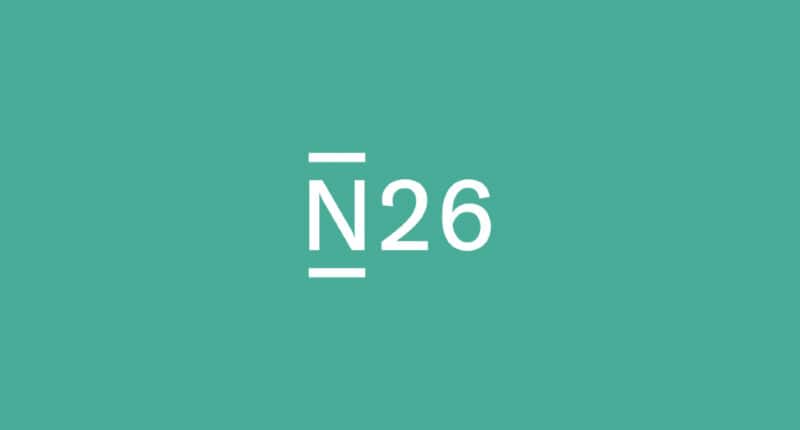 When planning a trip, travel insurance is something I always consider, especially if I’m venturing out of Europe. Many digital banks and fintech companies offer insurance coverage as part of their premium subscription plans, which makes things convenient if you travel frequently. In this article, I’m sharing my comparison of the travel insurance options provided by Revolut, Wise, and N26, highlighting what they offer, what they don’t, and a few alternative online travel insurance providers I’ve looked into.
When planning a trip, travel insurance is something I always consider, especially if I’m venturing out of Europe. Many digital banks and fintech companies offer insurance coverage as part of their premium subscription plans, which makes things convenient if you travel frequently. In this article, I’m sharing my comparison of the travel insurance options provided by Revolut, Wise, and N26, highlighting what they offer, what they don’t, and a few alternative online travel insurance providers I’ve looked into.
Revolut Travel Insurance
Revolut has been a popular choice for digital banking users, and it previously included travel insurance in several of its premium plans. However, recent changes have affected its coverage:
- Available for: Revolut Metal and Ultra plan users.
- Coverage includes:
- Emergency medical expenses.
- Trip cancellation and interruption.
- Lost or delayed baggage.
- Travel delays.
- Requirements:
- You must pay at least 75% of your transportation and accommodation costs using your Revolut account for coverage to be valid.
- Maximum trip duration is 30 days for Metal and 90 days for Ultra subscribers.
- Recent Updates:
- Travel insurance was removed from the Revolut Premium plan.
- Changes to coverage limits and eligibility have been made for Metal and Ultra plan holders.
My Take: Revolut’s travel insurance is handy if you’re already on a Metal or Ultra plan, but the payment requirement adds a layer of friction. You have to remember to use your Revolut account for most of your bookings.
Wise Travel Insurance
Wise doesn’t include built-in travel insurance, which is a bit of a downside if you’re looking for an all-in-one solution.
- Available for: Not offered.
- Alternative option: You’ll need to purchase standalone travel insurance from an external provider.
My Take: I still love Wise for managing multi-currency spending, but it just doesn’t help on the insurance front.
N26 Travel Insurance
N26 offers comprehensive travel insurance through its premium accounts, N26 You and N26 Metal, in collaboration with Allianz Assistance.
- Available for: N26 You and N26 Metal plan users.
- Coverage includes:
- Emergency medical coverage: Up to €1,000,000 for medical emergencies abroad, including dental emergencies and winter sports incidents.
- Trip cancellation and interruption: Reimbursement up to €10,000 for non-refundable trip costs due to unforeseen events.
- Baggage coverage: Up to €2,000 for baggage loss, theft, or damage, and up to €500 for baggage delays over four hours.
- Travel delay: Coverage up to €500 for expenses incurred due to delays over two hours.
- Personal liability: Coverage up to €500,000 for damages or injuries caused to third parties during a trip.
- Requirements:
- N26 used to require you to pay with your card for some of the insurance benefits, but that’s no longer the case. Now, you’re covered as long as your premium account is active—no matter how you paid for your trip.
- Additional Benefits for N26 Metal Users:
- Mobile phone insurance (up to €2,000).
- Purchase protection for high-value items.
My Take: N26 is my favorite option overall. It’s straightforward, and I don’t have to stress about which card I used to pay for the trip.
Other Online Travel Insurance Options for Europeans
If you’re like me and want flexibility—or if your bank doesn’t offer insurance—there are solid standalone options available.
SafetyWing is great for digital nomads and long-term travelers. Their subscription model makes it easy to stay insured without having to buy a new policy for every trip. They cover the essentials: emergency medical, trip interruption, and lost baggage.
Allianz Travel Insurance is one of the big names in the space. They offer everything from single-trip to annual multi-trip policies. It’s reliable, well-known, and covers just about everything you’d need.
AXA Travel Insurance is another solid option. I like that you can tailor your policy depending on how much coverage you want. Their customer service reputation is strong too, which is reassuring when you’re abroad.
Europ Assistance (also known as Euros Assist) has been around for ages and has a global support network. Their coverage includes 24/7 medical help, repatriation, trip cancellations, and more. It’s a good option especially if you travel with family or have longer stays planned.
Heymondo has become a favorite among some of my friends. Their app makes it super easy to manage everything, including medical chat support. Their plans are flexible and well-priced, and they offer strong coverage limits for medical emergencies and trip issues.
American Express is also worth looking into if you already have one of their higher-tier cards. The Platinum Card, for example, includes travel insurance for cancellations, medical emergencies, lost luggage, and car rentals.
Also, don’t overlook the option of getting insurance during the booking process. Platforms like Booking.com and many airlines now offer insurance as an add-on—it’s convenient and can work well for shorter trips.
Conclusion
For me, N26 stands out as the best all-around option, especially with its no-hassle coverage and no need to use a specific payment method. Revolut is still a decent option if you already use it and don’t mind the 75% payment rule. Wise is great for money transfers, but you’ll need to look elsewhere for insurance.
If you’re not covered through your bank, providers like SafetyWing, Allianz, AXA, Europ Assistance, and Heymondo all offer strong standalone plans. And if you’re an Amex cardholder, you might already have decent coverage without needing to do anything extra.
For most of my trips, I usually rely on my private health insurance in Spain (which offers international coverage) combined with N26 You’s travel insurance that covers things that can go wrong with baggage, delays, etc. The nice thing is that if my family is traveling with me then the insurance actually covers all of us. This is way cheaper than taking out travel insurance policies for each trip. As an example, while checking for a recent trip to Asia visiting 3 developed countries, the dedicated insurance providers quoted me around €400-700 euro for a family policy, whereas with my N26 You account I would have more or less the same coverage for much less (€10 a month). The additional benefit is that I don’t need to think about travel insurance every time I go on a trip, as I know it will always be available for me as long as I’m on the N26 You plan.
No matter which route you go, make sure to check the fine print before you travel—having the right travel insurance can make all the difference when something goes wrong abroad.



 In an increasingly globalized world, more and more individuals are seeking ways to secure a second passport. Whether for expanded travel freedom, financial opportunities, or a safety net, citizenship by investment (CBI) programs have become a popular choice.
In an increasingly globalized world, more and more individuals are seeking ways to secure a second passport. Whether for expanded travel freedom, financial opportunities, or a safety net, citizenship by investment (CBI) programs have become a popular choice. Options trading often boils down to one critical decision: should you let your position expire or close it early? This choice is relevant for both buyers and sellers of calls and puts. In this article, I’ll break down the scenarios for each type of option—long calls, short calls, long puts, and short puts—and provide practical tips for making the best decision.
Options trading often boils down to one critical decision: should you let your position expire or close it early? This choice is relevant for both buyers and sellers of calls and puts. In this article, I’ll break down the scenarios for each type of option—long calls, short calls, long puts, and short puts—and provide practical tips for making the best decision.